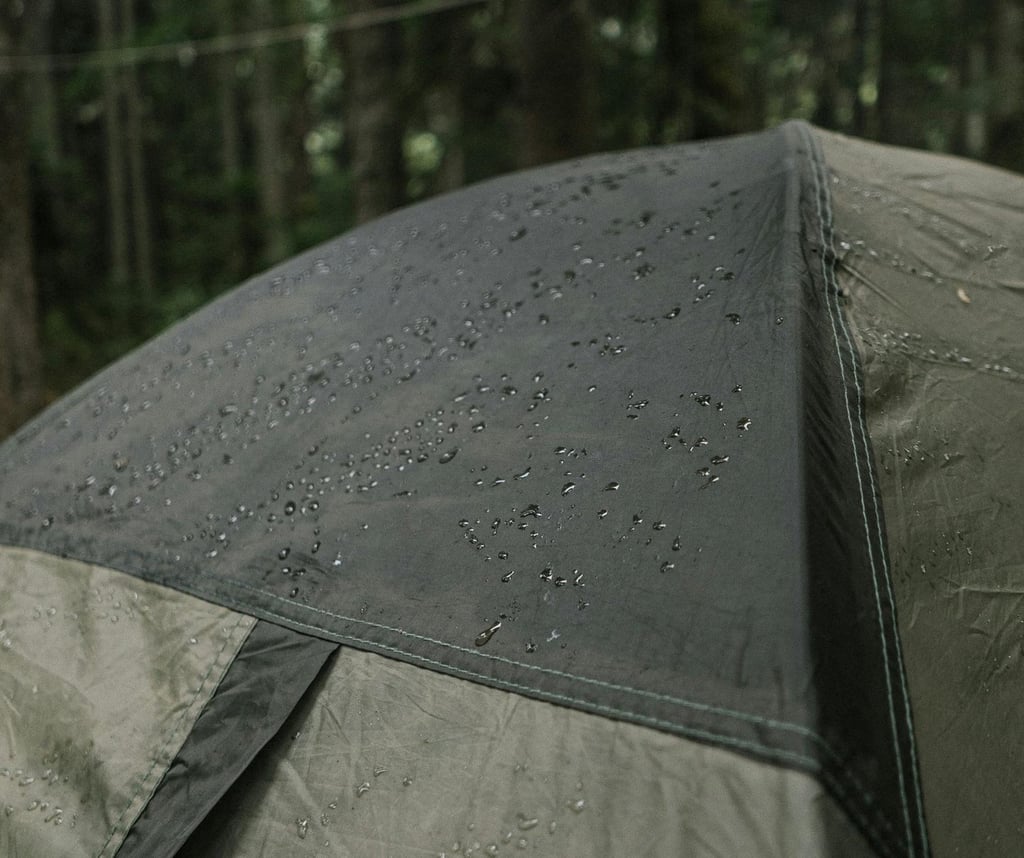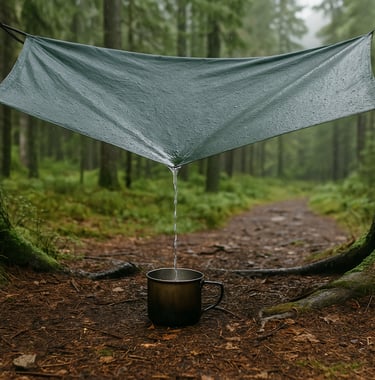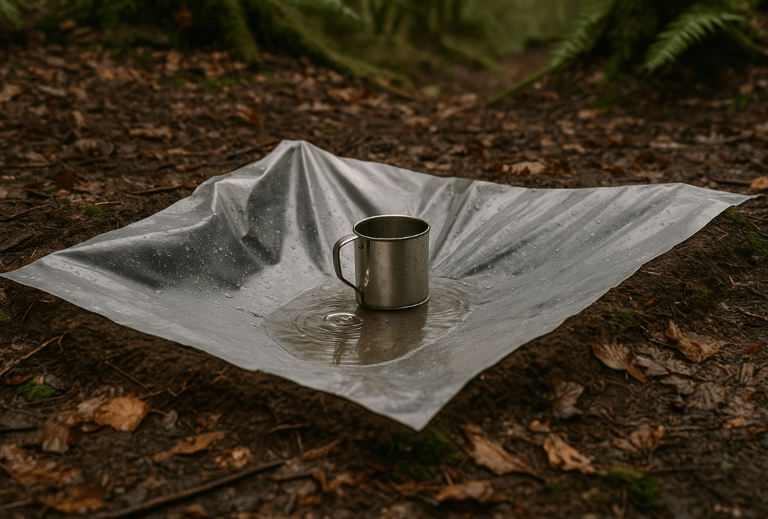Rainwater Collection in the Wild: Smart and Simple Survival Methods
Learn simple and effective rainwater collection methods for survival. Discover how to gather and store clean drinking water in the wild using tarps, bags, and natural materials.


Rainwater Collection in the Wild: Smart and Simple Survival Methods
Why Collect Rainwater for Survival?
When you’re out in the wild, finding clean drinking water is often the top priority. While rivers and lakes can work, they may be contaminated, or far from your camp. That’s where rainwater collection becomes a smart, sustainable solution. Rainwater is naturally fresh and often safe to drink if collected properly. In survival situations, being able to harvest it with simple gear or natural materials could make all the difference.
Rainwater collection for survival is an age-old technique, and with a little creativity, you can make it work even in remote, off-grid environments. Let’s break down some effective, easy to set up methods that don’t require fancy equipment — just smart planning and basic materials.
Rainwater is just one of many ways to stay hydrated in the wilderness. If rain isn’t falling or you’re traveling through dry terrain, knowing other ways to find water in the wild can help you uncover hidden sources like underground seeps, rock crevices, or animal tracks. You can also tap into lesser known techniques, like using plants and vines to find drinking water — especially in forests or humid environments where vegetation holds valuable moisture.
The Easiest Rainwater Collection Methods in the Wild
One of the simplest methods is using a tarp or poncho to funnel rain into a container. Stretch your tarp between trees or across a sloped area, and angle it so rainwater flows into a bottle, pot, or large leaf funnel. If you don’t have a tarp, use broad leaves, bark, or anything that can act as a catch surface.
You can also dig a shallow depression in the ground and line it with plastic sheeting. This works like a rainwater basin. Place a cup or bottle in the center, and make sure the plastic is angled to direct runoff into the container. It’s a primitive but effective way to collect water when gear is limited.
Is Rainwater Safe to Drink?
In most wilderness settings, freshly collected rainwater is one of the safest sources you’ll find. That said, always be cautious. Avoid collecting rain that runs off dirty surfaces like old tarps or leaves covered in bird droppings. If you’re unsure, it’s always best to boil the water or use purification tablets just to be safe.
The first rainfall after a dry spell can carry more debris, so let the first few minutes wash off your collection surface before gathering water. And remember: while rain itself is usually safe, storage matters. Always use clean containers to avoid recontamination.
What to Use for Collecting and Storing Rainwater
You can improvise a rainwater collection system from almost anything — plastic bags, ponchos, empty bottles, tarp fragments, or even your tent’s rainfly. The key is creating a slope that funnels rain into a clean container.
Once collected, store the water in sealed bottles or containers to keep it safe for later use. If you have purification gear, use it before drinking. Otherwise, boiling remains the best backup option for making rainwater safe, especially if your collection system isn't perfectly clean.
Of course, not all collected water is ready to drink right away. If your setup isn't perfectly clean, or you're unsure about contaminants, it’s smart to know how to purify water without a filter using heat, sunlight, or improvised methods. And if you suspect dehydration is already setting in, recognizing the warning signs and how to treat them can help you take action before it becomes dangerous.
Rainwater Collection: A Skill Every Survivalist Should Know
Whether you’re hiking, bushcraft camping, or in a real survival situation, collecting rainwater is a game-changing skill. It requires minimal tools, and in many cases, nature provides all the materials you need. Once you’ve practiced this method a few times, setting it up becomes second nature — and your chances of staying hydrated go way up.
Rain won’t always fall when you need it most, but when it does, be ready to take advantage of it. Knowing how to harvest clean water from the sky is one of the smartest and most reliable survival strategies there is. Now you can totally pray for rain.




© 2025. All rights reserved About | Privacy Policy | Terms and Conditions | Affiliate Disclosure | Disclaimer


